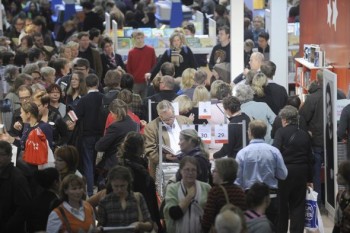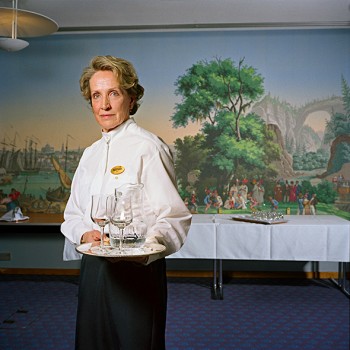Search results for "2010/02/2009/09/2011/04/matti-suurpaa-parnasso-1951–2011-parnasso-1951–2011"
Helsinki Book Fair: 28–31 October
22 October 2010 | In the news
The tenth Helsinki Book Fair takes place in Helsinki’s Exhibition & Convention Centre over the last weekend of October. More than 1,000 writers, artists, scientists, politicians and specialists will participate in the programme. There are more than fifty authors from 17 countries, among them the British historian Antony Beevor, the Estonian writer Jaan Kaplinski and the Indian writer Kishwar Desai.
The theme country this year is France, and among the French guests will be the novelists Andreï Makine and Nicolas Fargues, the fantasy writer Pierre Pével and the poets Sophie Loizeau, Hélène Sanguinetti and Gabriel Mwènè Okoundji, originally from Congo.
The translator Anne Colin du Terrail will talk to the writers Leena Lehtolainen and Johanna Sinisalo whose work she has translated into French.
Comics and graphic novels as well as poetry are also in the focus at this year’s Book Fair: approximately 70 Finnish and foreign poets feature in readings, interviews and nonstop performances.
In 2009 a record-breaking number of visitors – almost 77,000 – attended the Book Fair. It seems the autumnal Fair is a handy chance to many to buy Christmas presents, among other things; at least last year three out of four said they had come to buy books (and not just spot celebrities, for example).
This time, in addition to books, the visitors to the Exhibition & Convention Centre will be able to attend two other Fairs, entitled Wine, Food and Good Living and Music Fair as well.
Happy birthday to us!
13 February 2014 | Letter from the Editors
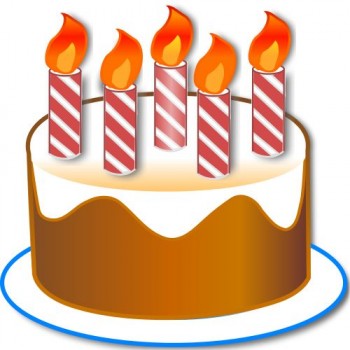
Picture: Wikipedia
It’s been five years since Books from Finland went online, and we’re celebrating with a little bit of good news.
In the past year, the number of visits to the Books from Finland website has grown by 11 per cent. The number of US and UK readers grew by 29 per cent, while the number of readers in Germany – stimulated perhaps by the publicity Finnish literature is attracting as a result of its Guest Country status at this year’s Frankfurt Book Fair – increased by an astonishing 59 per cent.
We’re chuffed, to put it mildly – and very thankful to you, dear readers, old and new. More…
Mikko Ylikangas: Unileipää, kuolonvettä, spiidiä. Huumeet Suomessa 1800–1950 [Opium, death’s tincture, speed. Drugs in Finland 1800–1950]
29 April 2010 | Mini reviews, Reviews
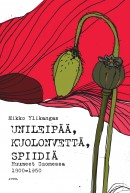 Unileipää, kuolonvettä, spiidiä. Huumeet Suomessa 1800–1950
Unileipää, kuolonvettä, spiidiä. Huumeet Suomessa 1800–1950
[Opium, death’s tincture, speed. Drugs in Finland 1800–1950]
Jyväskylä: Atena, 2009. 264 p., ill.
ISBN 978-951-796-578-1
€ 34, hardback
This book presents an account of the history of drugs in Finland, as well as changes in legal and illegal drug use. Even in the early 19th century, the authorities were concerned about opium abuse. Medical doctor Elias Lönnrot – best known for collecting the folk poems that make up the Kalevala, the Finnish national epic – coined the name ‘unileipä’, ‘the staff of dreams’, for opium. A period of prohibition of alcohol in the 1920s spurred a huge increase in the sale of cocaine; in the 1930s Finland led the Western world in consumption of heroin as a cough suppressant. In the late 1940s, the United Nations investigated why Finland, with a population of four million, consumed as much heroin in a year as other countries did over an average of 25 years. This was explained by the severity of wartime conditions: drugs were used to maintain battle readiness and to combat anxiety, sleeplessness and tuberculosis. Social problems caused by misuse did not, however, get out of control. This book was awarded a prize for the best science book of the year in Finland in 2009.
Shards from the empire
5 February 2010 | Fiction, Prose
‘Imperiets skärvor’, ‘Shards from the empire’, is from the collection of short stories, Lindanserskan (‘The tightrope-walker’, Söderströms, 2009; Finnish translation Nuorallatanssija, Gummerus, 2009)
Gustav’s greatest passion is for genealogy. He dedicates his free time to sketching coats of arms; masses of colourful, noble crests.
Gustav asked me to do a translation. I sat for ten days trying to decipher a couple of pages from a Russian archive dating from the 1830s. Sentences like, With this letter, we hereby give notice of our gracious decision.‘
The intricate handwriting belonged to some collegiate registrar or other. Perhaps Gogol’s Khlestakov. More…
Jaakko Heinimäki & Juha Metso: Miina – Äkkijyrkkä
6 November 2009 | Mini reviews, Reviews
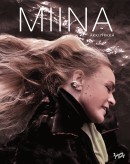 Miina – Äkkijyrkkä
Miina – Äkkijyrkkä
Text: Jaakko Heinimäki
Photos: Juha Metso
Helsinki: Johnny Kniga Kustannus, 2009. 190 p., ill.
ISBN 978.951-0-35552-7
€41, hardback
Miina Äkkijyrkkä (born 1949; real name Riitta Loiva) is a Finnish artist known for her cattle-themed paintings and sculptures. Äkkijyrkkä is also widely known as a passionate supporter and breeder of Eastern Finncattle, an endangered breed native to Finland. Most of the accompanying texts in this book which describe her ideas and her art come from a series of discussions with author and Lutheran minister, writer Jaakko Heinimäki, recorded in the spring of 2009. Miina Äkkijyrkkä speaks openly about her art and the diverse phases of her life, her values and faith, and her clashes with the authorities and the rest of society. This book is magnificently illustrated with Juha Metso’s photographs, which were taken over a period of 15 years in Finland and abroad. More information about the artist and her works is available here.
On the job
10 December 2010 | Extracts, Non-fiction
‘I like my pictures to be realistic and truthful, not that I can satisfactorily define what realism is. The real people in my pictures are in their real surroundings, even though they are posing for me. I see this as a series of encounters. The subjects present their “working role” for me, which I record‚’ says photographer Eija Irene Hiltunen. In these extracts she introduces her project and samples of her photography present people at work in contemporary Finland
Extracts from Työn tekijät. Muotokuvia suomalaisesta työstä. / Doing the job. Portraits of Finnish working life by Eija Irene Hiltunen. Texts: Pasi Alametsä. Translations: Joseph White. Layout: Petri Kuokka & Eija Irene Hiltunen (Avain, 2009)
One of the most important aims of my portraits has been to record an image of the times. I chose work as the common denominator because it relates to the social structure on so many levels.
The ‘visual inventory’ of Weimar Germany by the classic photographer August Sander has been the major inspiration for my work. He made a huge impression on me during my student days. He told of the upheavals of his own time through his portraits, as the old class society broke down, and of the time before the Second World War and the birth of modern Germany. Sander beautifully depicted history through the individual, and his portraits have remained as testaments to life during that era. More…
Jouni K. Kemppainen: Onnellinen mies. Arto Paasilinnan elämä [A happy man. The life of Arto Paasilinna]
21 June 2012 | Mini reviews, Reviews
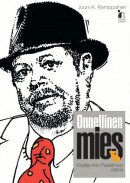 Onnellinen mies. Arto Paasilinnan elämä
Onnellinen mies. Arto Paasilinnan elämä
[A happy man. The life of Arto Paasilinna]
Espoo: Paasilinna, 2012. 307 p.
ISBN 978-952-5856-37-8
€ 28, hardback
Arto Paasilinna (born 1942) is an uncanny phenomenon. For Finns he is a popular, prolific author of picaresque novels – which in the 1970s, 80s and 90s were praised by the critics, while the books he produced later received less acclaim, though most of them have sold tens of thousands of copies. Paasilinna’s best-known novel is Jäniksen vuosi (The Year of the Hare, 1975). In Europe – particularly in France and Italy – he is considered to be a major natural philosopher. However, the charming social man of the world was capable of turning into a violent ruffian; journalist Jouni K. Kemppainen’s fluent biography highlights every aspect of the author’s character. The book describes the development of a boy from a poor northern Finnish family to an international best-selling author (his works have been translated into more than 40 languages) and introduces interesting correspondence between the author and his publisher. Kemppainen emphasises some recurring themes in Paasilinna’s work: relations between humans and animals, travelling. In 2009 the author suffered a head injury while drinking, and lost his memory almost completely. The title of his latest, thirty-fifth novel is Elävänä omissa hautajaisissa (‘Alive at his own funeral’, 2009). The impression that this biography leaves on the reader’s mind is a picture of a now gentle man who delights in the fact that he has accomplished all that he is reported to have accomplished – and in that he managed to survive.
Translated by David McDuff
Kjell Westö: Gå inte ensam ut i natten [Don’t go out into the night alone]
23 October 2009 | Mini reviews, Reviews
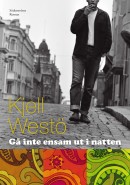 Gå inte ensam ut i natten
Gå inte ensam ut i natten
[Don’t go out into the night alone]
Helsinki: Söderströms, 2009. 604 p.
ISBN 978-951-52-2609-9
25 €, hardback
Finnish translation (by Katriina Savolainen): Älä käy yöhön yksin
Helsinki: Otava, 2009. 604 p.
ISBN 978-951-1-23833-1
25 €, hardback
This novel completes Kjell Westö’s Helsinki series and is his tenth book. As is the case with the three earlier books in this series (Drakarna över Helsingfors [‘The kites over Helsinki’], 1994, Vådan av att vara Skrake [‘The perils of being a Skrake’], 2000, and Där vi en gång gått [‘Where we once walked’], 2006, all also translated into Finnish) this is a character-driven, nostalgia-laden story that spans several decades. The central factor is music: in the 1960s three young people from different backgrounds become friends and record a single that ought to have been a huge hit, but because the song fades into obscurity, the circle of friends breaks up. In the latter part of the novel, a young man begins to investigate what became of the members of the trio and realises that his own life is linked to theirs. Westö (born 1961) writes remarkable experiential prose that brings the reader close to the characters. The retro setting may be a bit much for some: the avalanche of details feels rather excessive in places. Där vi en gång gått was awarded the Finlandia Prize in 2006. Another of Westö’s novels, Lang (2002), was published in England under the same title in 2005.
Worlds apart
18 June 2009 | Extracts, Non-fiction
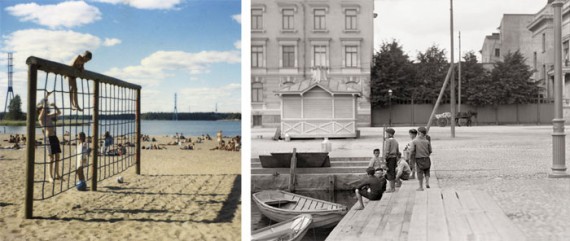
Helsinki boys by the sea: in Martti Jämsä’s Polaroid lads play on the beach; in I.K. Inha’s photograph (Hietalahden satama, ‘Hietalahti harbour’), taken a century earlier, barefoot urchins meet up on the quayside
A hundred years ago the photographer I.K. Inha (1865–1930) was asked to illustrate a tourist guide to Helsinki. He took some 200 photographs, of which some 60 were included in the book, which was published by WSOY in 1910. In his new book of photographs, OPS! Helsinki Polaroid¹, Martti Jämsä (born 1959), wanders the same streets a century on, taking snapshots with his Polaroid camera. More…
Mari Kujanpää: Minä ja Muro [Muro and me]
28 January 2010 | Mini reviews, Reviews
 Minä ja Muro
Minä ja Muro
[Muro and me]
Kuvitus [Ill. by]: Aino-Maija Metsola
Helsinki: Otava, 2009. 207 p.
ISBN 978-951-1-23418-0
15.10 €, hardback
The heavy themes of this children’s novel, winner of the 2009 Finlandia Junior Prize, have provoked discussion of who its target audience should be. Lauha is a 9-year-old girl who is considered an oddball at school; her classmates claim that she smells bad. Within her own family she’s an outsider. Her little brother’s serious illness has troubled the family for a long time, and even when he gets better her parents don’t know how to listen to Lauha, and their negligence verges on physical violence. But playing with Muro, her teddy bear, eases Lauha’s troubles, and luckily she finds a soul sister in Heta, the new school intern. Mari Kujanpää (born 1976) uses language suitable for a child’s state of mind in a very creative way. Muro ja minä is difficult for a child to read on his/her own, and would work best read aloud and discussed in a group of children or as a book for adult caregivers. The black and white illustrations are by Aino-Maija Metsola (born 1983), whose previous work includes designing fabrics for Marimekko.
John Simon: Koneen ruhtinas. Pekka Herlinin elämä [The Prince of Kone. The life of Pekka Herlin]
15 January 2010 | Mini reviews, Reviews
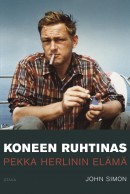 Koneen ruhtinas. Pekka Herlinin elämä
Koneen ruhtinas. Pekka Herlinin elämä
[The Prince of Kone. The life of Pekka Herlin]
Finnish translation of original English manuscript completed by various translators in collaboration with the author
Helsinki: Otava, 2009. 415 p., ill.
ISBN 978-951-1-23478-4
€ 33, hardback
Pekka Herlin (1932–2003) was the long-serving chairman of the board of the Kone lift and escalator company. During Herlin’s tenure, Kone completed a number of corporate acquisitions to become a major global corporation. John Simon, an American writer and researcher, takes an unusually honest and direct approach; the project was undertaken at the request of Antti Herlin, the current chairman of the board at Kone and son of Pekka Herlin. Pekka Herlin was known for being both gregarious and a cool-headed business strategist, but his irascible, unorthodox nature was familiar to many as well. Within his family he emerged as a tyrannical alcoholic with a severely disturbed personality, feared by his children. John Simon interviewed a great many people who knew Pekka Herlin personally, including members of Herlin’s immediate family. This biography was Finland’s best-selling non-fiction book in the autumn of 2009.
Tapio Markkanen Paratiisista katsoen. Tähtitaivaan karttojen historiaa [Viewed from Paradise. A history of maps of the night sky]
4 June 2010 | Mini reviews
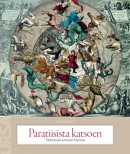 Paratiisista katsoen. Tähtitaivaan karttojen historiaa
Paratiisista katsoen. Tähtitaivaan karttojen historiaa
[Viewed from Paradise. A history of maps of the night sky]
Helsinki: Ursa (Astronomical Association), 2009. 143 p., ill.
ISBN 978-952-5329-80-3
€ 32, paperback
This book presents a scientific and cultural history of mapping the night sky, from ancient times up to the present day. In addition to the technical processes involved in producing celestial maps, it touches on a broad range of cultural connections, since the practice of mapping the heavens has always been inextricably linked with economic, cultural and political concerns throughout human history. How has mankind around the world experienced and comprehended the night sky? The title of this book refers to the ancient practice of portraying the skies the wrong way round – as a mirror image, as if viewed from heaven. ‘That’s how the gods would have seen it,’ the author, Professor Tapio Markkanen, an astronomer at the University of Helsinki, reminds us. This book was published in conjunction with an exhibition organised by the National Library of Finland as part of the International Year of Astronomy in 2009. Many of the maps reproduced in this book are from the Nordenskiöld Collection, housed in the National Library, and included in the UNESCO Memory of the World programme.
Monika Fagerholm: Glitterscenen [The Glitter Scene]
17 November 2009 | Mini reviews, Reviews
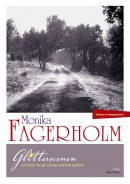 Glitterscenen
Glitterscenen
[The Glitter Scene]
Helsingfors: Söderströms, 2009. 407p.
ISBN 978-951-522-467-5
€29.90
Säihkenäyttämö
Finnish translation by Liisa Ryömä
Helsinki: Teos, 2009. 455 p.
ISBN 978-951-851-127-7
€29.90, hardback
In Glitterscenen Fagerholm reveals the shabby details of the murder mystery that was the essence of her celebrated Den amerikanska flickan, The American Girl (2006). In a sense, the two books are psychological thrillers, but they are also much more than that: the American girl’s death is a myth about destruction and creation – a narrative about love, death and glamour that attracts and seduces cohort after cohort of young women in the District, a place somewhere in Finland that is in the process of being transformed from the rural to the suburban. Like no other author, Fagerholm combines the advantages of plot-based realism with the deep psychological excavation of collective dreams and the secret layers of the unconscious. In the centre of the District there is a kiosk where the local priest’s daughter, fat May-Gun, presides over dirty magazines, sickly candy and magnificent dreams. Across the square, eyed by horny small-town greasers, walks young and blonde Suzette. The result is a deadly drama, propelled by grief and narcissism. The Glitter Scene is the goal of our dreams, but also a dangerous place of instant gratification and sudden death.
Not a world language, and yet….
16 January 2015 | Articles, Non-fiction

The editors (Hildi Hawkins and Soila Lehtonen) at the screen: we begun publishing material on our website in 1998. Photo: Jorma Hinkka, 2001
Longevity may not generally be a virtue of literary magazines – they tend to come and go – but Books from Finland, which began publication in 1967, has stuck around for a rather impressively long time. Literary life, as well as the means of production, has changed dramatically in the almost half-century we have been in existence. So where do we stand now? And what does the future look like?
This is the farewell letter from the current Editor-in-Chief, Soila Lehtonen – who began working for the journal in 1983
‘The literature of Finland suffers the handicap of being written in a so-called “minor” language, not a “world” language…. Finland has not entirely been omitted from the world-map of culture, but a more complete and detailed picture of our literature should be made available to those interested in it.’
Thus spake the Finnish Minister of Education, R.H. Oittinen, in early 1967, in the very first little issue of Books from Finland, then published by the Publishers’ Association of Finland, financed by the Education Ministry.
Forty-seven years, almost 10,000 printed pages (1967–2008) and (from 2009) 1,400 website posts later, we might claim that the modest publication entitled Books from Finland, has accomplished the task of creating ‘a more complete and detailed picture’ of Finnish literature for anyone interested in it. More…

